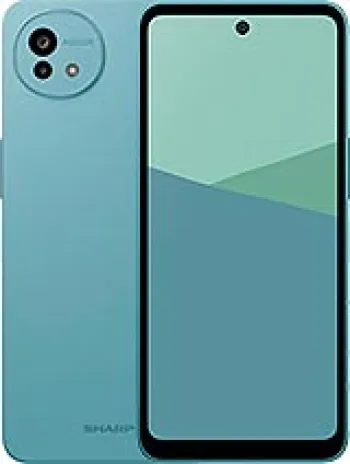
Introduction to Sharp TM150
The Sharp TM150 is a classic feature phone that was released in the early 2000s. Renowned for its simplistic style and functional capabilities, it represents an era of mobile technology that emphasized practicality and basic connectivity. In a time when smartphones were yet to dominate the market, devices like the Sharp TM150 provided essential communication functionalities and a touch of mobile entertainment. In this article, we will delve deeply into the specifications and features of the Sharp TM150, exploring what made it a noteworthy device in its time.
Body and Build Quality
The Sharp TM150 featured a compact and sturdy design, with dimensions of 93 x 43 x 25 mm and a weight of 113 grams. This made it a robust and easily portable device. The phone was designed to fit comfortably in the hand, with a minimalistic keypad layout that was intuitive to use. The body was made of durable materials that ensured longevity and resistance to everyday wear and tear.
Display
The display of the Sharp TM150 was one of its standout features for its time. It boasted a 2.2-inch TFT screen capable of displaying 256K colors, offering vibrant and clear visuals. With a resolution of 240 x 320 pixels and a pixel density of approximately 182 ppi, the display was suitable for basic multimedia applications and ensured that text and images appeared sharp and colorful.
Camera
The Sharp TM150 was equipped with a single 1 MP camera, which was a significant feature at the time. The camera allowed users to capture photos and record videos, contributing to the phone's multimedia capabilities. While the quality was basic compared to modern standards, it provided users with the ability to document everyday moments.
Memory and Storage
With an internal storage capacity of 6MB, the Sharp TM150 could store a handful of images, contacts, and messages. The device also featured an SD/MMC card slot for expanding storage capacity, which was a useful feature for users wanting to keep more multimedia files or install additional applications. The phonebook could hold up to 500 entries and supported photo call features, making contact management convenient.
Network and Connectivity
The Sharp TM150 was designed to operate on GSM networks, supporting bands 900, 1800, and 1900. With GPRS Class 10, it offered basic mobile data capabilities suitable for lightweight web browsing and multimedia messaging. However, it lacked advanced connectivity options found in modern devices, such as Bluetooth, WLAN, and GPS. The phone did include a USB 1.1 port for basic data transfer and charging functions.
Sound and Audio Features
The audio capabilities of the Sharp TM150 were tailored to the needs of its user base. While it did not include a loudspeaker or a 3.5mm audio jack, it supported downloadable polyphonic ringtones in various formats such as SMAF, MIDI, and i-melody. This functionality allowed users to personalize their notification sounds and ringtones according to their preferences.
Battery Life
The device came with a removable Li-Ion 780 mAh battery, which provided up to 200 hours of standby time and up to 3 hours and 20 minutes of talk time. This battery life was considered adequate for standard mobile phone usage during its time, offering users sufficient performance for daily activities without the need for frequent recharges.
User Interface and Software
As a feature phone, the Sharp TM150 ran on a proprietary operating system designed to deliver straightforward and efficient performance. It included basic messaging services like SMS, MMS, and email, and supported WAP 2.0/xHTML for internet browsing. The phone also provided downloadable games, catering to users seeking entertainment options without the complexity of modern smartphone applications.
Conclusion
The Sharp TM150 represents a crucial phase in mobile phone development, bridging the gap between basic mobile phones and the advent of smartphones. Its practical design, combined with essential features, made it a popular choice among users who valued reliability and simplicity. Although it may seem limited compared to current devices, the Sharp TM150 was a testament to the technological advancements of its time, offering its users a valuable tool for communication and mobile entertainment.
Key Features of Sharp TM150
- GSM technology with 2G bands support (GSM 900 / 1800 / 1900)
- Compact dimensions: 93 x 43 x 25 mm
- Lightweight: 113 g
- 2.2-inch TFT display with 256K colors
- High resolution display: 240 x 320 pixels
- Expandable memory via SD/MMC card slot
- 1 MP main camera with video recording capability
- Photo call function in Phonebook with 500 entries support
- Downloadable ringtones: Polyphonic, SMAF, MIDI, i-melody, AMR
- Java support: MIDP 1.0
- Removable Li-Ion 780 mAh battery with up to 200 hours standby time
- Messaging support: SMS, MMS, Email
Sharp TM150 Drawbacks
- No EDGE support for faster internet connectivity
- Discontinued status means no long-term support or updates
- Limited internal memory of 6MB, which might not be sufficient for modern needs
- No front-facing selfie camera available
- Lacks a loudspeaker, restricting hands-free audio options
- No 3.5mm headphone jack, reducing options for private listening
- No WLAN, Bluetooth, or GPS for enhanced connectivity
- Missing FM Radio feature
- USB 1.1, which is outdated and slower compared to newer USB versions
- Limited battery life with up to 3 hours and 20 minutes of talk time

View Also
More Phones
All Rights Reserved +14045 Phones © Mobilawy 2025

























